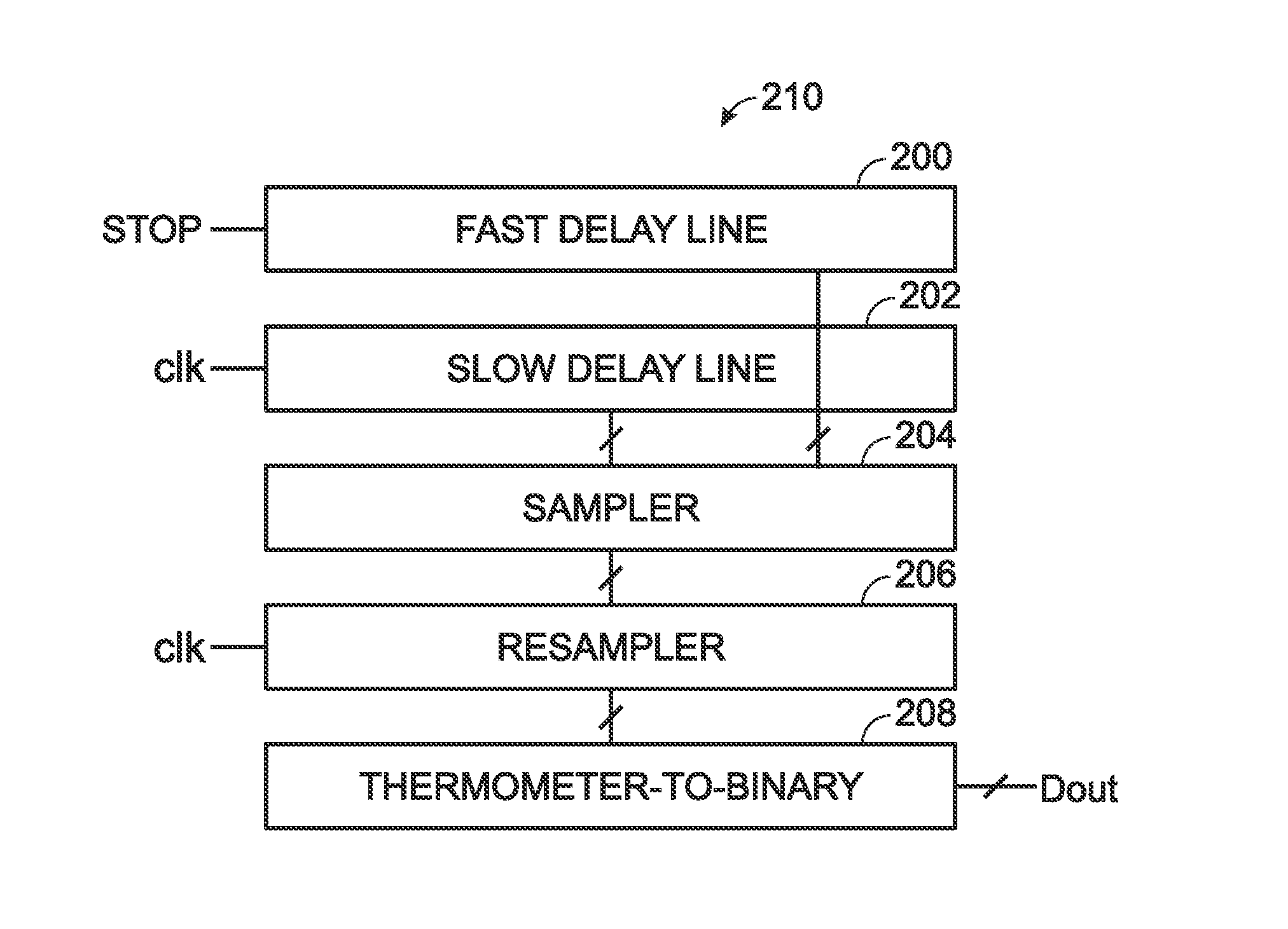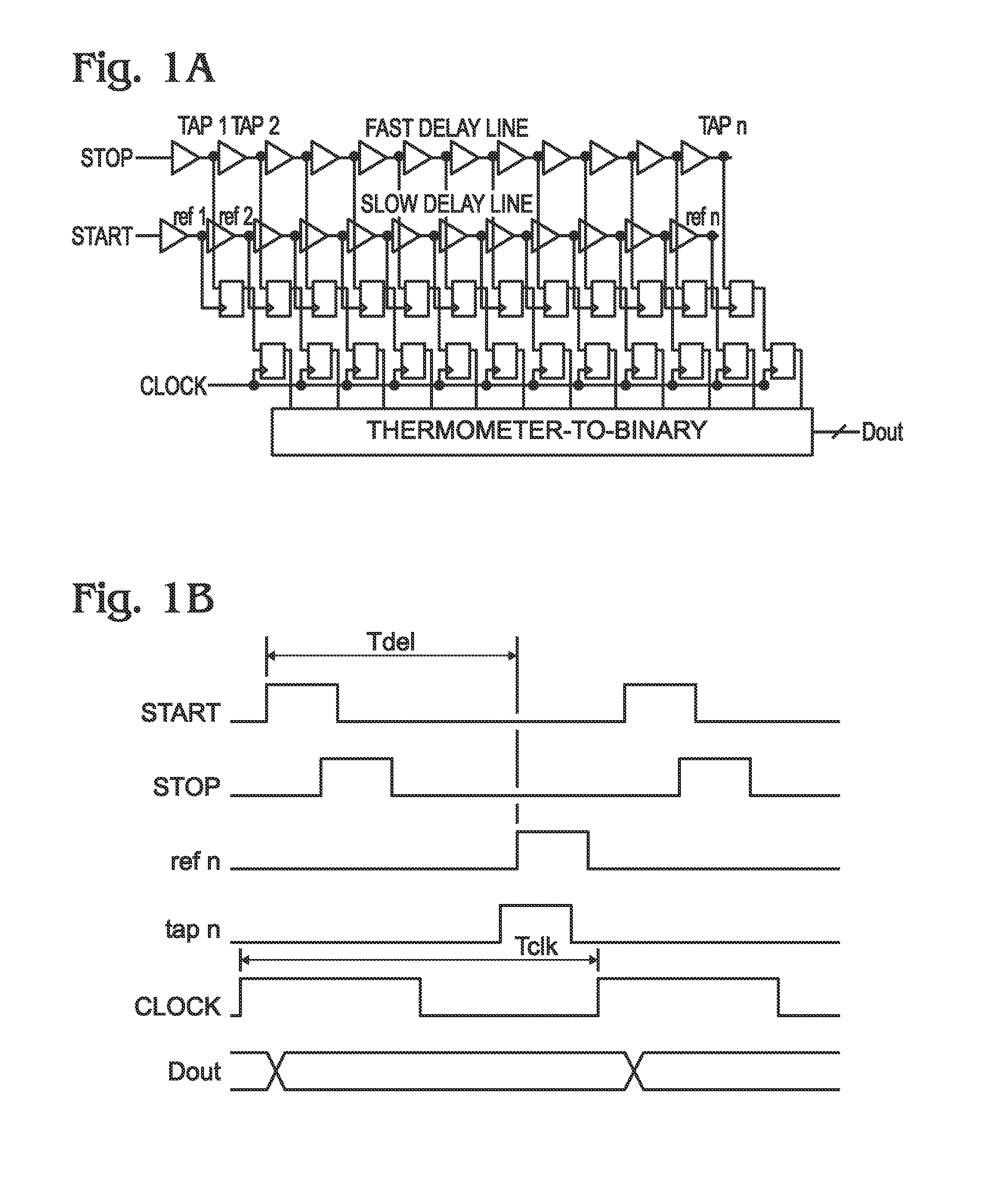Traveling Pulse Wave Quantizer
a pulse wave and quantizer technology, applied in the field of electronic circuitry, can solve problems such as digital signal corruption, and achieve the effect of preventing metastability
- Summary
- Abstract
- Description
- Claims
- Application Information
AI Technical Summary
Benefits of technology
Problems solved by technology
Method used
Image
Examples
Embodiment Construction
[0024]FIG. 2 is a block diagram of a Traveling Pulse Wave Quantizer (TPWQ). The TPWQ 210, which may also be referred to as a pipelined Vernier delay line time-to-digital converter, comprises a fast delay line 200 to accept a stop pulse and slow delay line 202 to accept a clock (CLK) pulse. As described in greater detail below, measurements from the fast delay line 200 and slow delay line 202 are fed into sampler 204. To this point, the circuitry is similar to the conventional design depicted in FIG. 1A. A resampler 206 accepts the clock signal and information from the sampler 204. Optionally, the results from the resampler 206 are fed to a thermometer-to-binary block 208, which provides a digital output (Dout).
[0025]FIGS. 3A and 3B are, respectively, a schematic block diagram and associated timing diagram, describing the TPWQ block diagram of FIG. 2 is greater detail. The fast delay line 200 has an input on line 300 to accept a first stop signal followed (in time) by a second stop s...
PUM
 Login to View More
Login to View More Abstract
Description
Claims
Application Information
 Login to View More
Login to View More - R&D
- Intellectual Property
- Life Sciences
- Materials
- Tech Scout
- Unparalleled Data Quality
- Higher Quality Content
- 60% Fewer Hallucinations
Browse by: Latest US Patents, China's latest patents, Technical Efficacy Thesaurus, Application Domain, Technology Topic, Popular Technical Reports.
© 2025 PatSnap. All rights reserved.Legal|Privacy policy|Modern Slavery Act Transparency Statement|Sitemap|About US| Contact US: help@patsnap.com



